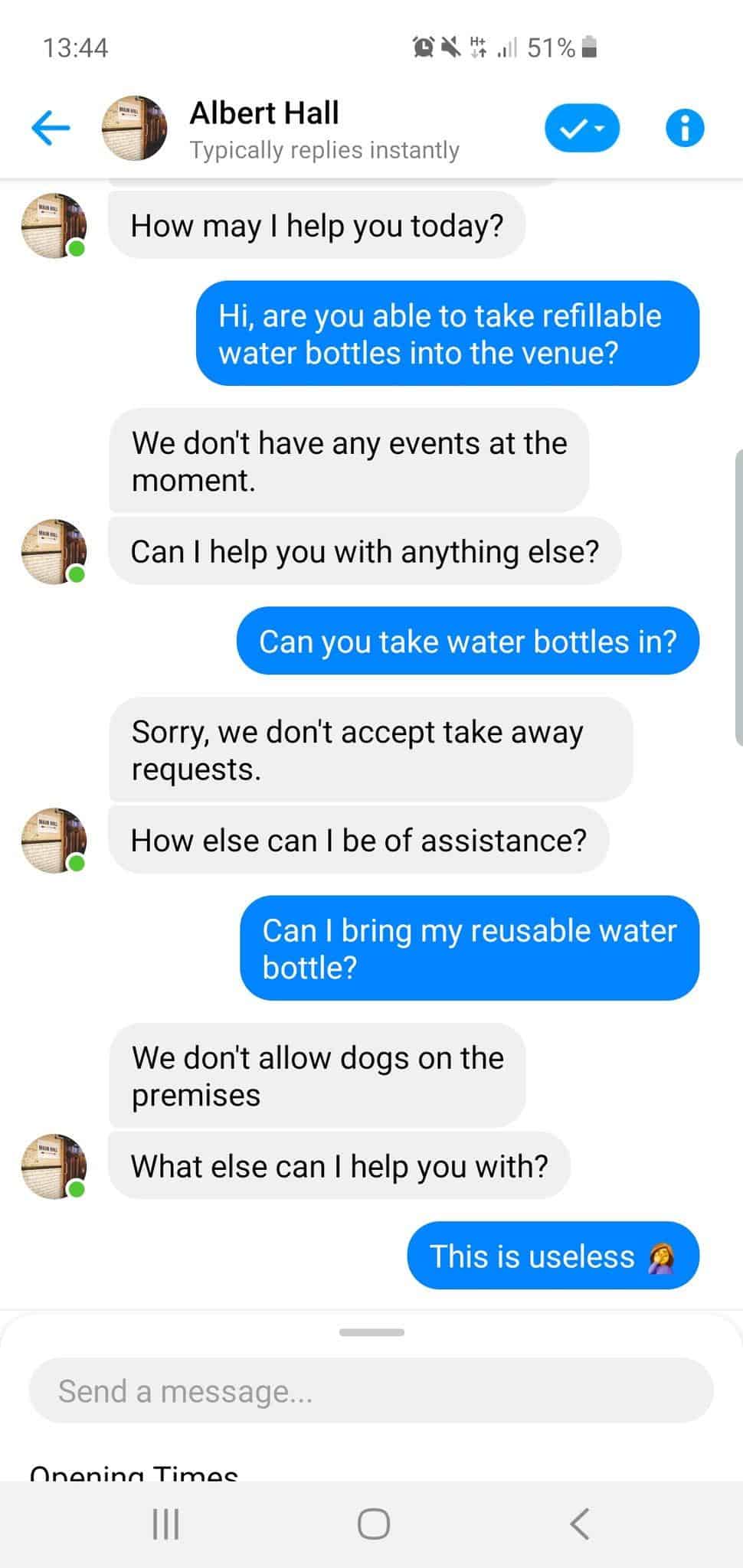Adhering to social etiquette has been an essential part of human relationships since ancient times: and it is no different on social media.
As social media is a key part of many brands marketing strategies, digital marketers need to understand user-like media etiquette in order to thrive.
Here’s how you can get started with social media etiquette.
What is social media etiquette?
Do you know what is social media etiquette? Social media etiquette is the unspoken set of social guidelines brands, users and organizations follow when using social media platforms as a form of digital marketing. Following social media etiquette is an essential part of every brand’s digital policy, as breaking these etiquette rules will damage your brand’s reputation.
Social media etiquette rules change with each social media platform, and boil down to the following key themes:
- Be fair to yourself and others online.
- Be honest with what you post.
- Do not harass, target, or bully others.
- Do not dilute that platform with low-quality, spammy posts.
- Do not place the interests of your brand over the privacy, safety, and comfort of your customers.
In practice, these themes might seem quite vague – which is why it is essential for every brand on social media to develop a set of social media etiquette rules as part of their company-wide digital policy.
Why is social media etiquette important?
Social media is a fairly level playing field between brands and regular social media users. They understand why is social media etiquette important for them. As brands do not have a natural position of authority on social media, breaking social media etiquette can have very negative consequences for your brand long term. Brands that abuse social media platforms are at risk of being banned, boycotted, or facing (well-deserved) publish backlash.
Alternatively, following good social media etiquette can help with your customer retention strategy, as it builds your credibility as a trustworthy, reliable, and customer-focused organization. Following social media etiquette also has other benefits, as it may:
- Help you create a deeper relationship with your followers.
- Decrease your customer-churn rate.
- Increase engagement on your posts.
- Help you connect with influencers and other brands.
- Increase your click-through rate (CTR).
- Give you social credibility within your industry.
Best practices of social media etiquette
Social media is built on two-way communication between influencers, brands, and regular social media users. To help you navigate this communication, here are ten best practices brands should follow on social media.
#1. Avoid being too promotional
Overtly sales-oriented social media posts are a guaranteed way to destroy your social credibility, as they will make your brand look desperate, pushy, and money-hungry.
To avoid this pitfall, brands with good social media etiquette build their social media strategy around their sales process. Your sales process includes your digital sales funnel, which guides customers towards a sale in four stages:
- Awareness: when potential leads become aware of your brand and offerings.
- Interest: when potential leads research your offerings.
- Decision: when potential leads decide whether or not to become customers.
- Action: when customers make their purchase.
Whether you sell through social media or on a separate website, your social media posts belong in the ‘awareness’ stage. This means your posts should prioritize being educational and informative, as their purpose is to bring potential leads into the sales funnel, not make the final sale.

Image via MailMunch
#2. Don’t over-automate
Automation tools are a fantastic way to use your time more productively. Automation allows digital marketers to focus on more creative tasks, increasing the amount of quality content your brand produces. However, there is such a thing as over-automation.
Over the past few years, we have seen digital marketers fully automate their brand’s social media presence – but this opens your brand up to risk. Automation tools are still developing, meaning they cannot process emotions or use contextual reasoning the way humans can.
This means that automation tools have been known to post inappropriate, out of context, or even rude content. In more innocuous cases, automation tools can be frustrating for customers to use, like in this exchange below.

Image via userlike
To avoid a scandal driven by your automation tools, keep your automation behind-the-scenes and have all written content authored by a person.
#3. Use your hashtags wisely
Hashtags are a great way to market your content to social media users who are not following you, as users who view each hashtag will find your content. However, it is easy to abuse hashtags.
When hashtags are used badly, they appear spammy, confusing, and pointless. This makes your digital marketing efforts look cheap and badly-planned, reducing the social credibility of your brand.
To use your hashtags wisely, always plan out your hashtags in advance. This will help you market your content with hashtags that are relevant to your brand, customers, and content.
You should also research your hashtags thoroughly. This will help you choose popular hashtags, as well as design content that will stand out from other content with the same hashtag.
When it comes to formatting your posts, always ensure you use hashtags correctly by:
- Using less than 5 hashtags on each post.
- Avoiding punctuation or spaces.
- Avoiding the ‘@’ symbol inside the tag.
- Using short hashtags over long ones.
- Checking your hashtag is not likely to be misconstrued (ie. ‘#susanalbumparty’)

Image via Darien Chamber of Commerce
#4. Be authentic
The best social media content is always going to be authentic, as social media relies on people communicating person-to-person. Although brands should behave professionally online, appearing cold, overtly promotional, or overly corporate will scare followers away – as most people consider social media a leisure activity.
As a brand, you can stay authentic on social media by ensuring you only post high-quality content with a human touch. While low-quality content is sales-focused and boring, high-quality content is educational, unique, and written for readers.

Image via Darien Chamber of Commerce
High-quality content comes in many forms, including written posts, videos, photos, infographics, interactive tools, and eBooks. This content is perfect for social media marketing, as you can delve into a topic, give your followers information about your product and conclude with a call-to-action without appearing overtly-spammy.
As I briefly touched on in best practice ‘#1. Avoid being too promotional’, this allows you to invite your followers into your sales funnel using soft selling. Create high-quality content, and you can sell through your social media while maintaining good social media etiquette.
#5. Don’t trash-talk the competition
While humans are naturally drawn to drama and gossip, starting a social media war between you and your competition is a great way to kill your social credibility in seconds.
Many brands have considered an internet fight with their competition as a marketing tool, as it may temporarily increase your social media engagement. However, this rarely ends well for anyone – as it will portray you as petty and turn a large section of your audience against you.
For this reason, it is good social etiquette to treat your competitors politely and professionally on social media. The best way to do this is by avoiding any public association with competing brands and their employees.
Tip!
If you want to monitor your competition without following them directly, track your competition’s social media accounts on a media database.
#6. Empower your staff
Brands with good social media etiquette allow staff to engage with their employer on social media (if they choose). While people have always been wary of listing their employer in their profile, the trend is justifiably becoming more popular on platforms like Facebook and LinkedIn.
Engaging with your staff on social media helps put a human face to your organization while helping your employees show off their professional portfolio online. When your employees follow good social etiquette, this is a win-win scenario.
To empower your staff, develop a clear digital policy and hold social media etiquette training semi-regularly.
#7. Be careful with tags
Social media tags are a way to include other social media accounts by mentioning them in your posts with the “@” symbol. Tagging is an important tool on every social media platform, as it allows users to link to one another. For digital marketers, this means you can shine a spotlight on your employees, customers, and other brands in your posts.
However, tags are incredibly easy to misuse – meaning one wrong move may land you on a ‘best brand fails’ list. There are many things to be wary of with tags, including tagging the wrong user, spelling the tag wrong, tagging an inactive account, or tagging accounts with offensive names.
When you tag another user, you are also lending them your social credibility. If the entity you tag breaks social etiquette or finds itself in a scandal, it can make your brand look guilty by association.
To stick to the unspoken social etiquette of tagging, thoroughly vet the people you choose to tag, plan your tags on your content calendar, and only tag other users with their permission.
#8. Don’t misrepresent your brand
Authenticity is key to wholesome social media use, which is why misrepresenting your brand is a massive breach of social media etiquette. It can be tempting for digital marketers to misrepresent their brand in many ways, from portraying a larger-than-life image of your brand to censoring negative reviews.
However, misrepresenting your brand has huge consequences – as will lose the trust of your customers when you get caught. You will also increase your customer churn rate, as social media represents your brand as the first step in your sales funnel.

Image via clevertap
To keep your customer churn rate low, never misrepresent your brand and only make promises you can keep.
#9. Understand the culture of each platform
Every social media platform is unofficially governed by a set of social policies that dictate the culture of a platform and how a user should behave. These policies are unspoken, but brands should still adhere to them to keep their followers happy.
While this isn’t an exhaustive list, here are some stand-out rules for Facebook, Twitter, and Instagram.
Facebook:
- Don’t spam your followers with messages.
- Limit your posts and alternate between types of content.
- Don’t post unflattering images of other people.
- Don’t abuse the tagging system to get post engagement.
- Don’t share links without a caption.
Twitter:
- Vett each hashtag before you use it.
- Don’t beg for retweets.
- Retweet posts directed at you and respond directly.
- Reply when people tweet at you.
- Limit each post to a single tweet.
Instagram:
- Always credit content to its original author if you repost it.
- Don’t post overly-long Instagram stories.
- Double-check your hashtags before you use them.
- Reply to posts you are tagged in.
#10. Be future-centric
As social media is a long-term marketing strategy, good social media etiquette will always be future-centric. This means that your behavior on social media today should be consistent with your brand’s goals and geared towards keeping your followers long-term.
The longer you can keep a follower, the higher their customer lifetime value (CLV) will be. Your customer lifetime value is the amount of money a customer is expected to spend in your business over their lifetime. As it is cheaper to keep existing customers than it is to recruit new ones, this is more profitable for your brand to invest in increasing the CLV of each customer.

Image via Clevertap
Staying future-centric is a key part of keeping your CLVs high, as bad social media content will lose you, followers. To ensure you stay future-ready on social media, avoid changing your brand’s behavior based on current trends, stay away from viral content and keep proper etiquette of posting on social media consistent.
You can also build long-term customer relationships by replying to customers, responding to both positive and negative reviews, and adhering to good social media etiquette.
Social media etiquette takeaways
The culture of each social media platform changes constantly, making social media a tricky landscape to navigate as a brand. However, a little governance and planning can help brands use social media responsibly – allowing you to make an authentic connection with your audience long term.
As best practices for social media etiquette change, brands need to be responsive and adjust their own digital policies.
As digital marketers, this means we need to stay in-tune with how our followers want us to behave on social media.

